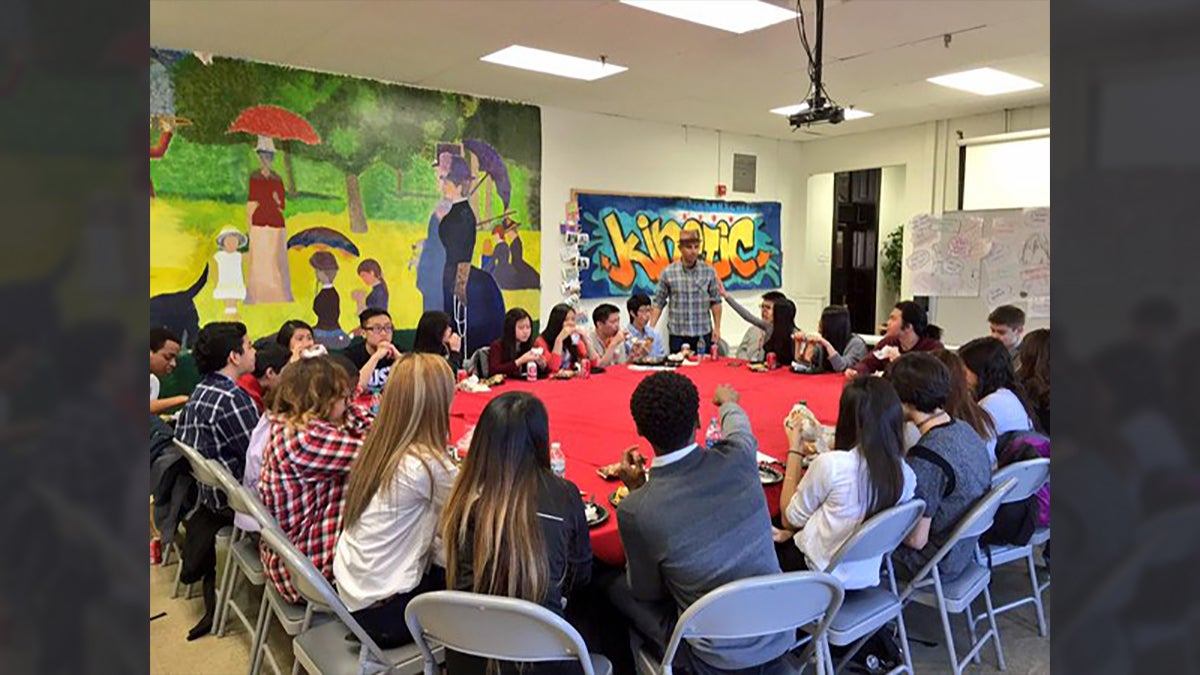Acting to change in face of bullying that targets Asian-American, Pacific Islander kids

(Image courtesy of courtesy of Rebecca Lee
After a White House task force found Asian-American and Pacific Islander kids are targeted by bullies, it has offered recommendations to students, teachers and communities on ways to defuse that harassment.
The findings resonate in the Delaware Valley because of race-based attacks on Asian students attending South Philadelphia High School in 2009.
The task force convened, in part, because community groups were reporting a high number of bullying incidents, but the national data looked different, said actor and task force member Maulik Pancholy.
“We had all this information and yet, on the national level, the information we had in terms of percentages being reported were that Asian students reported being bullied at a rate of about 9.2 percent,” he said. “Something didn’t add up.”
Through 29 listening sessions — including one at South Philadelphia High School — the task force found kids could be reticent when it came to talking about the issue with parents or faculty. They were afraid adults wouldn’t understand, or that parents had too much on their plates already.
And sometimes kids didn’t understand that racially-inflected insults constitute bullying behavior, Pancholy said. For English as a second language learners, it was even tougher.
Some students thought that school staff didn’t care about addressing these incidents, and instances of bullying happen in the classroom, Pancholy said.
“I remember hearing this one story about a kid who wore a turban to school and raised his hand to ask a question,” he said. “And his teacher said, ‘Maybe if you took that turban off, you’d be able to hear better.'”
Pancholy said students told of being bullied in the classroom, with a teacher present.
That, he said, was particularly alarming.
“For me, one of the big recommendations was around school climate — and how to create a school climate that values and understands and celebrates cultural and linguistic diversity,” he said.
What to do
The task force recommends training “teachers, principals, and school counselors to support a welcoming school climate, and to be more supportive of and responsive to all students, particularly those who may be bullied.”
Other recommendations range from creating a welcoming school climate to partnering with relevant community organizations that support Asian and Pacific Islander students. It also launched a public awareness campaign, “Act To Change,” which includes resources exist in six languages.
Xu Lin is a former community organizer who worked with Asian students at South Philadelphia High School in the aftermath of the 2009 off-campus attacks that sent some students to the hospital. The recommendations are welcome, he said, although he’s still skeptical.
“Everything was great, but my question is, where are the resources to local organizations?”
Lin was part of a program that successfully united students from different backgrounds after the 2009 attacks, but when the funding ran out, that program ended. He worries that without programs and support, those kids who are being bullied every day won’t have a clear path to a safe school environment.
A spokeswoman for the White House Initiative on Asian American and Pacific Islanders said in an emailed statement, “We are committed to continue working across the federal government to improve resources benefiting the AAPI community — from more translated materials to convenings with community stakeholders to grant funding for programs on cultural competency and bullying.”
She also cited specific commitments from the federal government, such as developing Hinduism Cultural Professionalism Training through the Department of Justice and creating fact sheets on AAPI bullying through the Department of Education.
WHYY is your source for fact-based, in-depth journalism and information. As a nonprofit organization, we rely on financial support from readers like you. Please give today.




